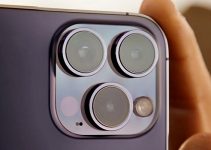As mirrorless camera shooters, we all know that getting the perfect exposure in-camera when filming outdoors in very bright and glary conditions can often be tricky and overwhelming, to say the least. Unfortunately, relying only on the rear LCD of your Sony mirrorless camera as a reference to nail down the exposure might often result in blown highlights or super dark blacks, a situation that every professional videographer typically wants to avoid.
Here are four tools that can help you to get the cleanest image possible eliminating the necessity to rely only on what you see on your camera display. This excellent video by the Academy of Storytellers will walk us through the four primary tools you can use in camera to choose a perfect exposure.
4 Tools To Help Dial in a Perfect Exposure from Story & Heart on Vimeo.
Overall, as Michael Shu points out, the optimal exposure is the primary factor in creating the cleanest image that retains as much information as possible. If you overexpose, you may lose many highlight details that later can’t be recovered in post. On the contrary, if you underexpose, some unwanted noise and artefacts will be introduced in the picture once you brighten it up in your NLE or colour grading application.
The optimal way to get the perfect exposure is by getting the bright highlights as high as you can get without clipping. This approach will give you the most amount of data in the mid-tones and shadows to play with later in post. The first tool that can help you to achieve this particular goal is a Histogram. The best part is that this tool can be commonly found in most popular DSLRs and mirrorless cameras optimised for video shooting. Typically, histogram allows you to get a rough idea of how your overall exposure is looking. Additionally, you can see when you are going too far clipping on either side.
Another tool that may come in handy is the Zebra function of your camera. Overall, this tool is amazingly helpful in making sure you don’t blow your highlights by providing a visual representation of the areas of your image where highlights are clipping. If possible program a button of your camera so that you can easily and quickly toggle on and off this extremely useful tool when filming.
The next handy tool presented in the video above is the Waveform. The x-axis of a waveform represents the width of the image, whereas the y-axes show the brightness of the pixels within that slice. Overall, it’s a tool that shows much more detail than the histogram, so you can figure out which part of the image is under- or overexposed. As-a-rule-of-thumb, when come to skin tones make sure that they fall around 50% range or a little bit higher.
The last one of the four tools suggested in the video is the RGB Parade. Essentially, it’s a waveform. The only difference is that each of the individual colour channels – red, green and blue – are displayed individually in a parade. This way you can see exactly where each colour channel falls exposure wise. Ultimately, RGB Parade is an excellent tool not only for keeping an eye on your overall exposure but also can warn you if any colour balance issues are causing clipping in your image.
The best part of using these four incredibly handy tools in-camera is that you can still utilise them once you drop your files in your favourite NLE making sure that you have the full control over the perfect exposure of your images from start to finish.
[source: Story & Heart]
Disclaimer: As an Amazon Associate partner and participant in B&H and Adorama Affiliate programmes, we earn a small comission from each purchase made through the affiliate links listed above at no additional cost to you.
Claim your copy of DAVINCI RESOLVE - SIMPLIFIED COURSE with 50% off! Get Instant Access!




Um, seems you forgot the best way… false color.